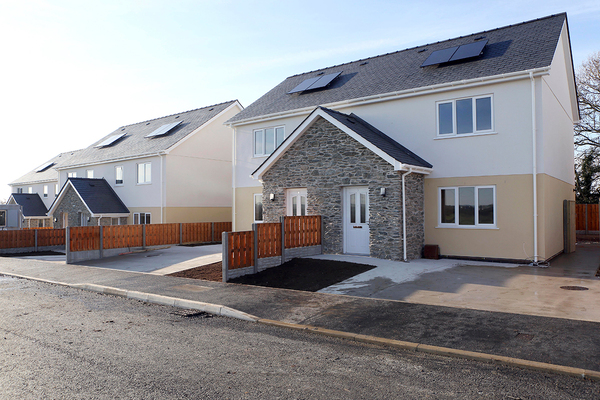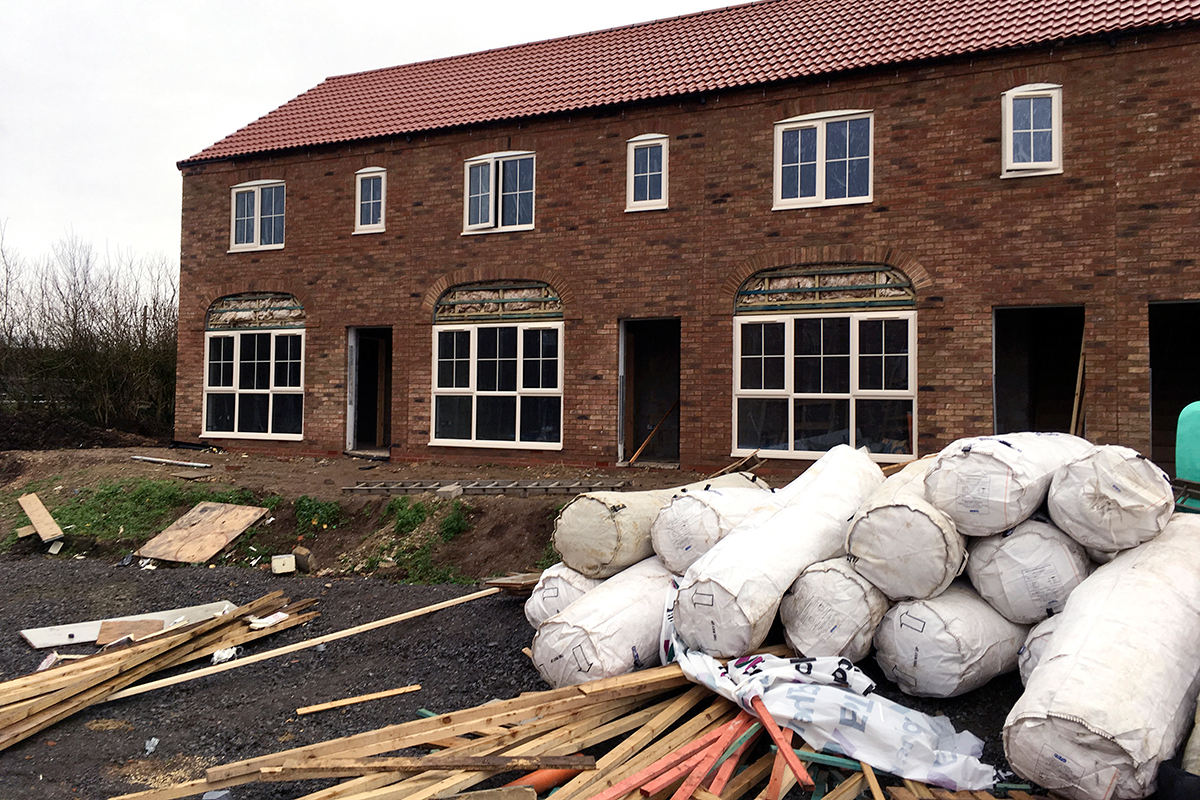The issues energy suppliers face in remote areas
Two housing associations reveal how they have approached energy provision in rural areas
Article written in association with:

GRWP CYNEFIN
Anglesey developments
Sizes: nine, 10 and 14 units
North Wales housing association Grwp Cynefin has more than 4,800 houses in its portfolio, and is driven by the need for affordable housing developments in rural, off-grid and sometimes remote areas.
Energy accessibility and costs are an important part of the mix, according to Gwyndaf Williams, the association’s development manager.
“One of the things we focus on is having a system that provides an affordable way to heat the houses,” he states. “On top of that, there’s limited availability of mains gas in some areas, which might preclude some developments if there’s no alternative.”
He believes that LPG gives developers options for heating when developing in rural areas. “It is about what is available for heating properties and then making developments viable where potentially they wouldn’t be otherwise,” he says.
Developments by Grwp Cynefin use LPG for fuel, without significant extra expense or specialist contractors
More options
Grwp Cynefin has collaborated with Calor Gas to provide all the properties in several off-grid developments in villages on the island of Anglesey with LPG.
The first, an off-grid development of nine affordable houses in Penysarn, was completed three months ago. The second, a 10-house development in Llanddeusant, was completed four months ago. The third, a development in Cemaes of four bungalows, six two-bedroom houses and four three-bedroom houses, is due to be completed in about a month’s time.
Mr Williams says: “LPG is, of course, just one energy system currently available to developers looking at options for sustainable systems and to achieve carbon targets. But it is an affordable system for developing housing, whether that be through using bulk storage tanks, a communal tank or individual tanks for the properties, all the way through to the use of gas bottles.”
ONGO HOMES
Owlet Mews
Size: 19 units
Owlet Mews is a development of 19 two, three and four-bedroom semi-detached and detached houses and bungalows in Blyton, a rural village in Lincolnshire, that is due to be fully completed this August. It is a mixed-tenure development: 14 of the properties are open market sale, with the balance being rural affordable homes.
That rural location presented some challenges for housing provider Ongo Homes, which built the scheme working with builder TG Sowerby Developments.
Martin Phillips, development manager at Ongo Homes, says: “We’ve got 10,000 stock and we’re located predominantly across North Lincolnshire, which includes a lot of rural settlements, many of which don’t have a natural gas supply,” he says.
He says Ongo’s focus is always how affordable the services for the properties will be for the end user. “So, over the past six years or so, we have been looking at cost-effective ways of heating and providing hot water to our dwellings, particularly in those areas without access to natural gas.”
Like many housing providers, Ongo looked at a range of solutions. These included air source heating, infrared heating and solar.
“There are advantages and disadvantages to all these non-traditional methods and systems,” Mr Phillips says. “And, of course, you’ve also got the fact some of these systems are a little bit unknown to the tenants or end users. All this was factored into our thinking on the development at Owlet Mews.”
Ongo eventually chose to use Calor Gas liquefied petroleum gas (LPG) to fuel all 19 units in the Blyton scheme.
“The beauty of the Calor Gas system is that essentially, the storage tanks for it are hidden. They are underground, so you don’t have a negative aesthetic to the look and feel of the new build development.”
Mr Phillips says one of its key attractions for Ongo was its user-friendliness and ease of use, as was the fact all the properties are individually metered.
“That’s a good thing for housing associations,” he explains. “It’s very easy for the end user to understand because, essentially, they just have what looks like a traditional gas boiler in their kitchen or wherever it is.”
Development by Ongo which uses LPG for fuel
Flexibility
LPG’s flexibility was also important. “It allows us to construct these dwellings in line with our new build specification – we are not having to reinvent the wheel or try other innovative forms of building technology.
“It is a tried and tested, traditional construction. You don’t, for example, have to build ground source heat pumps or think about how optimally to locate an air source heat pump. It is just a standard, traditional build with the benefit of huge amounts of insulation built into the property,” Mr Phillips adds.
This, in turn, has the knock-on benefit of Ongo not needing to go out of the region to source specialist contractors or builders. “There isn’t an over-supply of building contractors readily available for us in North Lincolnshire to work on our developments. We have a strategy to try to work where we can with local contractors who know the supply chain and the sub-contract market,” Mr Phillips says.
“What we’ve found when we’ve had to work outside the region is that builders are just terrifically more expensive. It all rolls down into being able to replicate what works for us,” he adds.
Importantly, LPG is also affordable not just for residents but also for Ongo. “LPG is a small amount more expensive but, across the piece, it will still work out affordable for the residents. And using LPG helps us to build the scheme because we’ve been able to use our traditional specification that we are used to, so capital costs haven’t been restrictive. Obviously, we are now on site and as a result have been able to proceed and build the scheme,” Mr Phillips adds.












